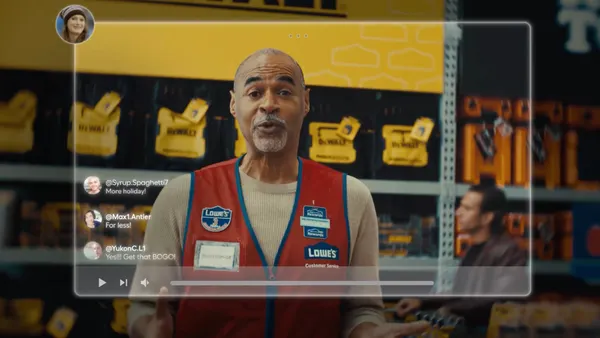The following is a guest post from Stephan Bruneau, Wavemaker's global head of product development. Opinions are the author's own.
Only a few years ago, big data was all the rage. The expectation was that to be successful, marketers had to invest heavily into big data and its related concept, the data lake. That included first-party data generated by brands' websites, campaign data from search, video and display viewings, visits to third party websites, CRM and more.
Underlying this trend was also the notion that all this data had to be connected using a single person ID — typically a cookie — to streamline everything known about that person and enable one-to-one targeting.
The reality is that that's hard to do, and few marketers are there today. A 2018 survey revealed that only 38% of CMOs believe their investments in data and analytics fully support their decision-making process.
A further complication to consider includes access to data becoming increasingly restricted, with the European Union's General Data Protection Regulation (GDPR) and forthcoming legislation in the U.S. with the Do Not Track Act introduced in May for discussion in Congress.
There is also the emergence of internet tracking protection (ITP), a mechanism already implemented by Apple in its Safari browser to block or automatically delete cookies after a few days, and Google announcing a similar move for the Chrome browser.
Are data lakes becoming useless?
Not completely, but their ability to drive end-to-end targeting will likely decrease. Walled gardens like Google, Amazon and Facebook can still retain large amounts of cookie data because their users must enable them to benefit from the services they provide. These platforms also have access to people's device IDs and use them to connect the dots of our online activities.
Marketers operating from within the Google ecosystem, for example, will still be able to retain decent one-to-one targeting capability within the platform's ecosystem. But even there, there will be limitations, including the lack of tracking how YouTube ad views relate to consumers' Amazon purchases — different walled gardens!
Is it all doom and gloom for data-driven marketing?
No, because there is still a huge untapped marketing opportunity around the use of data. Our industry has been so focused on technology and the obsession with connecting cookies for the benefit of tactical targeting that we've lost sight of the much bigger strategic opportunity of identifying audience behavior and key moments in the purchase journey that can fuel a brand's growth.
To do this, we don't necessarily need cookie-level connections between data sources. What we need is to install clear data lanes within the data lake, like swim lanes. Data lanes from different sources that serve distinct purposes throughout the marketing and media planning process can help to identify growth sources, emerging audiences and new behaviors before exposing an ad to a potential buyer.
These data lanes can be strategically bridged through statistical techniques and AI algorithms to help process and organize vast amounts of data, enabling us to create detailed media plans that reach audiences and spur growth across unique purchase journeys.
It's not the end of data-driven marketing, we just have to swim in a different direction.













